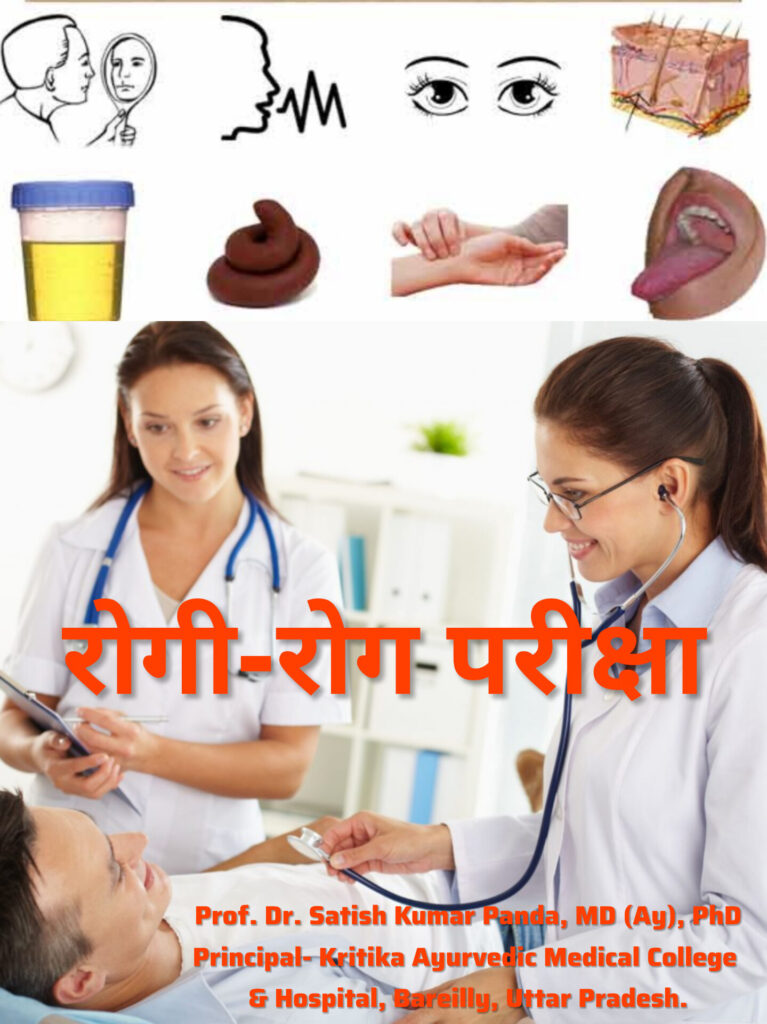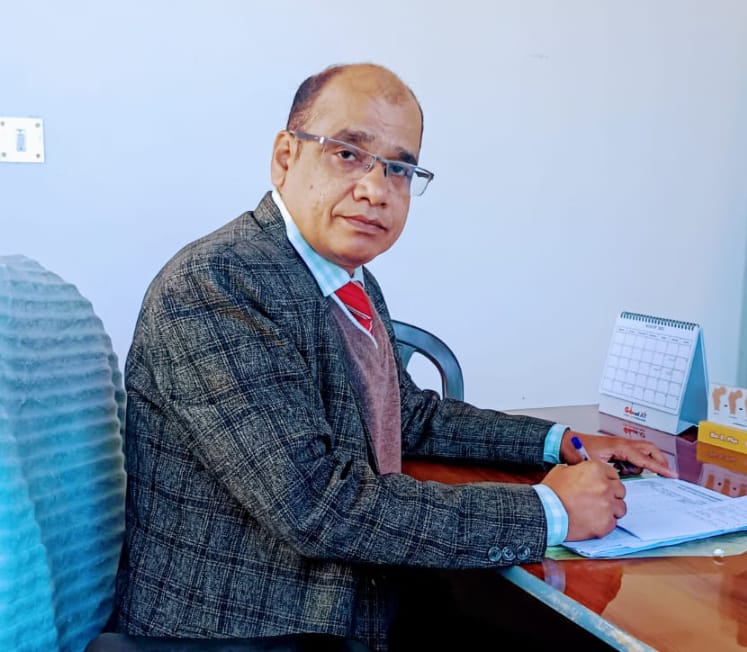

Prof. Dr. Satish Kumar Panda, MD (Ay), PhD
Principal-Kritika Ayurvedic Medical College & Hospital, Bareilly, Uttar Pradesh.
Based on Classical Ayurvedic Texts: Charaka, Sushruta, Madhava Nidana
1. रोगी परीक्षा (Patient Examination)
(A) त्रिविध परीक्षा (Threefold Examination)
- दर्शन (Inspection)
- Observe:
- वर्ण (Color) – Pallor (पाण्डु), Jaundice (हरिद्रा), Cyanosis (नीलिमा).
- आकृति (Structure) – Swelling (शोथ), Wasting (क्षय).
- त्वचा (Skin) – Dry (रूक्ष), Oily (स्निग्ध).
- स्पर्शन (Palpation)
- Check:
- उष्मा (Temperature) – Cold (शीत) in Vata, Hot (उष्ण) in Pitta.
- स्पन्दन (Pulsations) – Nadi (पुल्स), Tenderness (स्पर्शासहिष्णुता).
- प्रश्न (Interrogation)
- Ask about:
- आहार-विहार (Diet & Lifestyle)
- मल-मूत्र-निद्रा (Bowel, Urine, Sleep patterns)
- व्यसन (Habits like smoking/alcohol)
(B) अष्टस्थान परीक्षा (Eightfold Examination)
- नाडी (Pulse)
- Vata – Irregular (सर्पगति), Pitta – Rapid (काकगति), Kapha – Slow (हंसगति).
- Examined at radial artery (right hand in males, left in females).
- मूत्र (Urine)
- Color:
- Pitta – Yellow/Red, Kapha – Whitish, Vata – Clear.
- Tests: Oil-drop test (तैलबिन्दु परीक्षा).
- मल (Stool)
- Vata – Hard/Dry, Pitta – Loose/Yellow, Kapha – Mucoid/Whitish.
- जिह्वा (Tongue)
- Vata – Dry/Cracked, Pitta – Red/Yellow-coated, Kapha – White-coated.
- स्वर (Voice)
- Vata – Hoarse, Pitta – Sharp, Kapha – Deep/Slow.
- त्वचा (Skin)
- Vata – Rough/Dry, Pitta – Hot/Inflamed, Kapha – Cold/Oily.
- नेत्र (Eyes)
- Vata – Dry/Dull, Pitta – Red/Yellowish, Kapha – Watery/Swollen.
- आकृति (Body Build)
- Vata – Thin, Pitta – Medium, Kapha – Heavy.
2. रोग परीक्षा (Disease Examination) – निदान पंचक (Nidana Panchaka)
Five diagnostic pillars for disease assessment:
- निदान (Cause)
- हेतु:
- आहारज (Dietary) – Viruddha Ahara (incompatible food).
- मानसिक (Psychological) – Krodha (anger), Shoka (grief).
- पूर्वरूप (Prodromal Symptoms)
- ज्वर (Fever): Angamarda (body ache), Aruchi (anorexia).
- अम्लपित्त (Acidity): Hritkantha Daha (burning in chest).
- रूप (Clinical Features)
- वातज ज्वर: Chills, Dry cough.
- पित्तज ज्वर: High fever, Thirst.
- उपशय (Therapeutic Test)
- Vata improves with Ushna (hot) treatments.
- Pitta improves with Sheeta (cooling) therapies.
- संप्राप्ति (Pathogenesis)
- Samprapti Ghataka: Dosha-Dushya-Avastha (Stage of disease).
- Example: Ama formation → Rasa dhatu vitiation → Jwara.
3. चिकित्सा सिद्धान्त (Treatment Principles)
- निदान परिवर्जन (Avoid causative factors)
- E.g., Avoid cold food in Vata disorders.
- दोष शमन (Pacification of Dosha)
- Vata – Sneha (oleation), Pitta – Tikta (bitter herbs), Kapha – Rukshana (drying).
- धातु सम्यक् (Tissue repair)
- Rasayana (rejuvenation) after Dosha balance.
Clinical Pearls for Students
- “नाडी परीक्षा” is the most dynamic diagnostic tool in Ayurveda.
- “उपशय-अनुपशय” helps confirm diagnosis (e.g., relief with heat → Vata imbalance).
- Always assess Prakriti (constitution) before treatment.
📖 References: Charaka Samhita (Nidana Sthana), Madhava Nidana, Ashtanga Hridaya.
॥ सुश्रुत उवाच ॥
“यथादृष्टं यथाश्रुतं चिकित्सितं सिद्धिमाप्नुयात्।”
(Treatment based on proper examination leads to success.)
